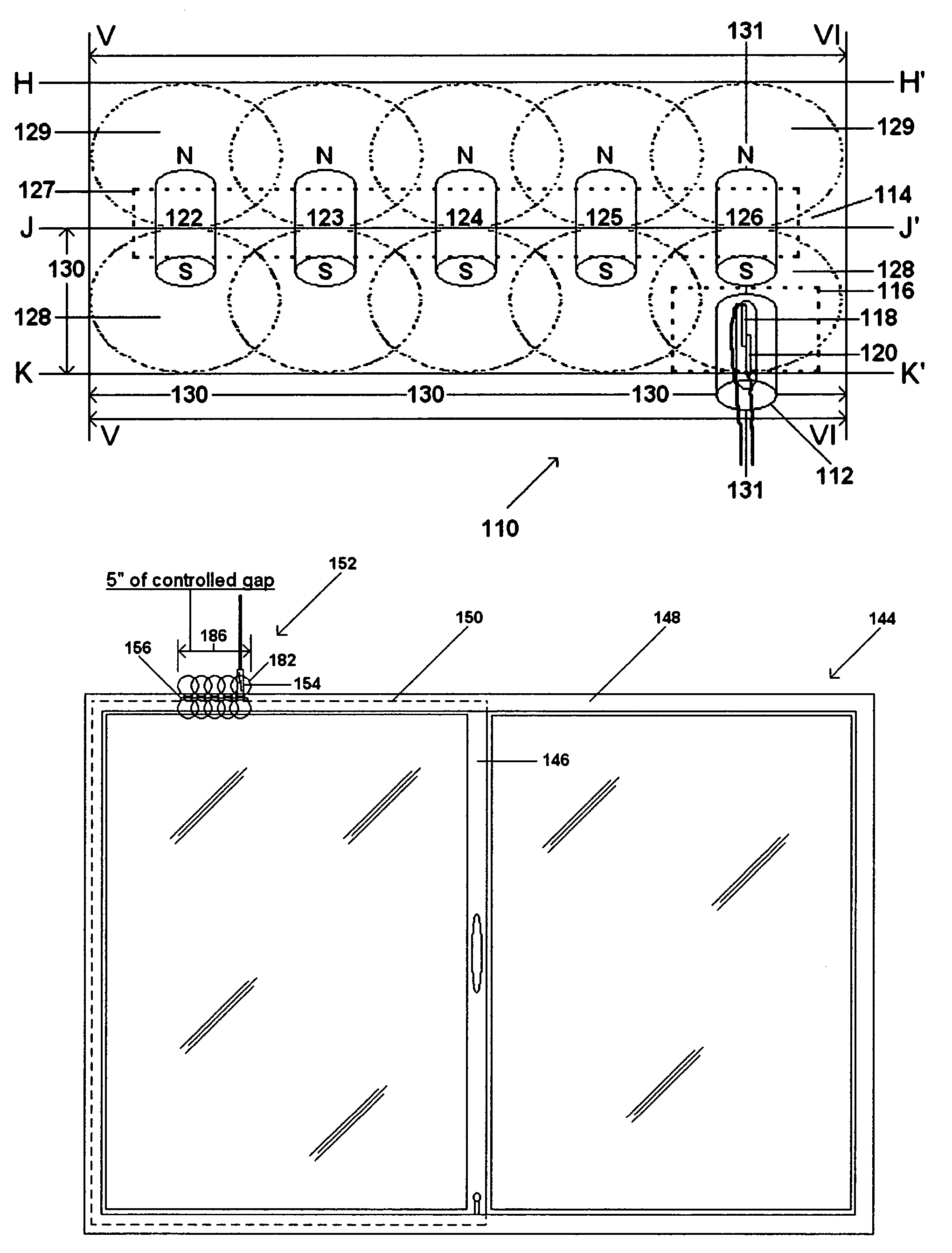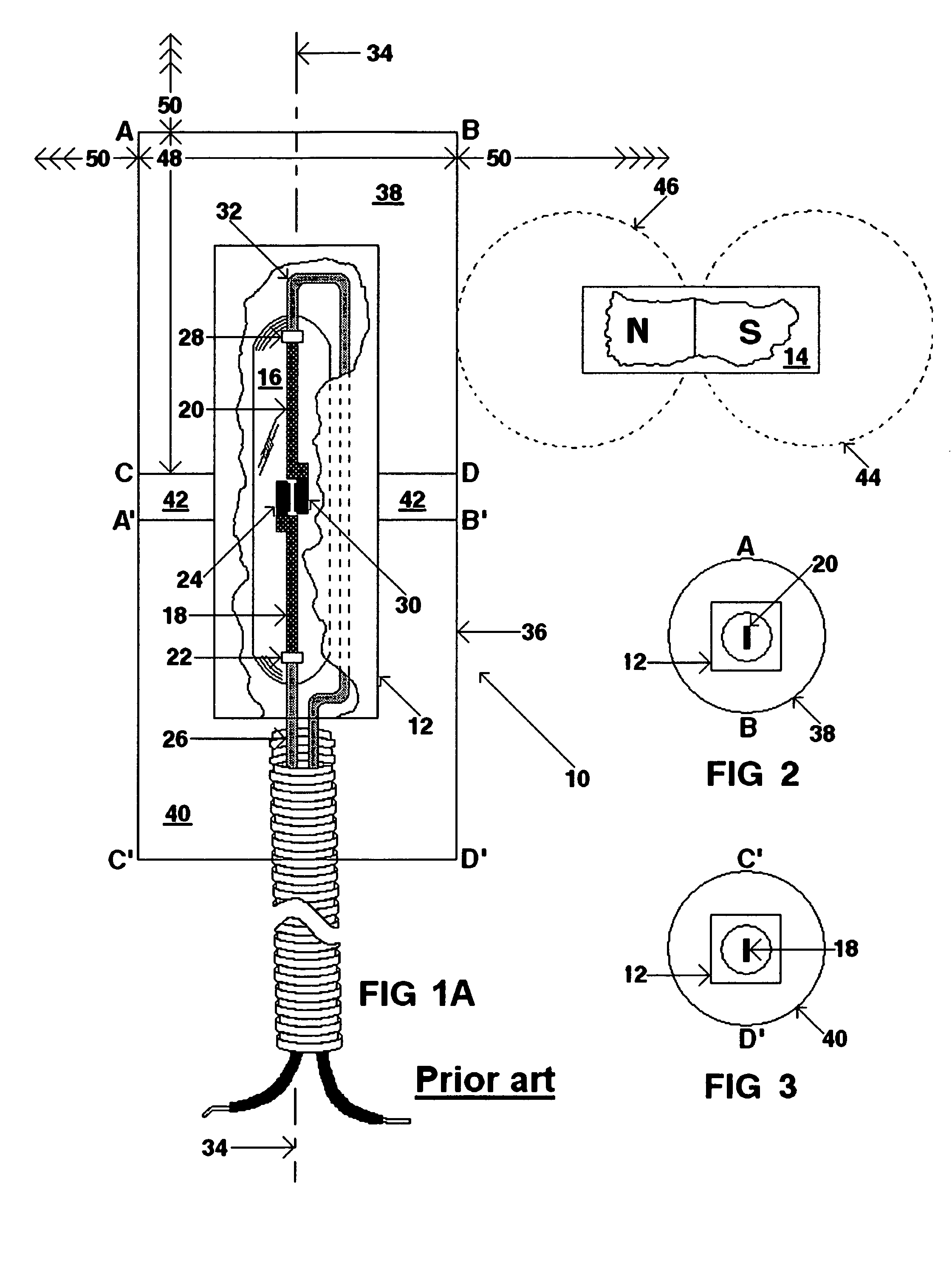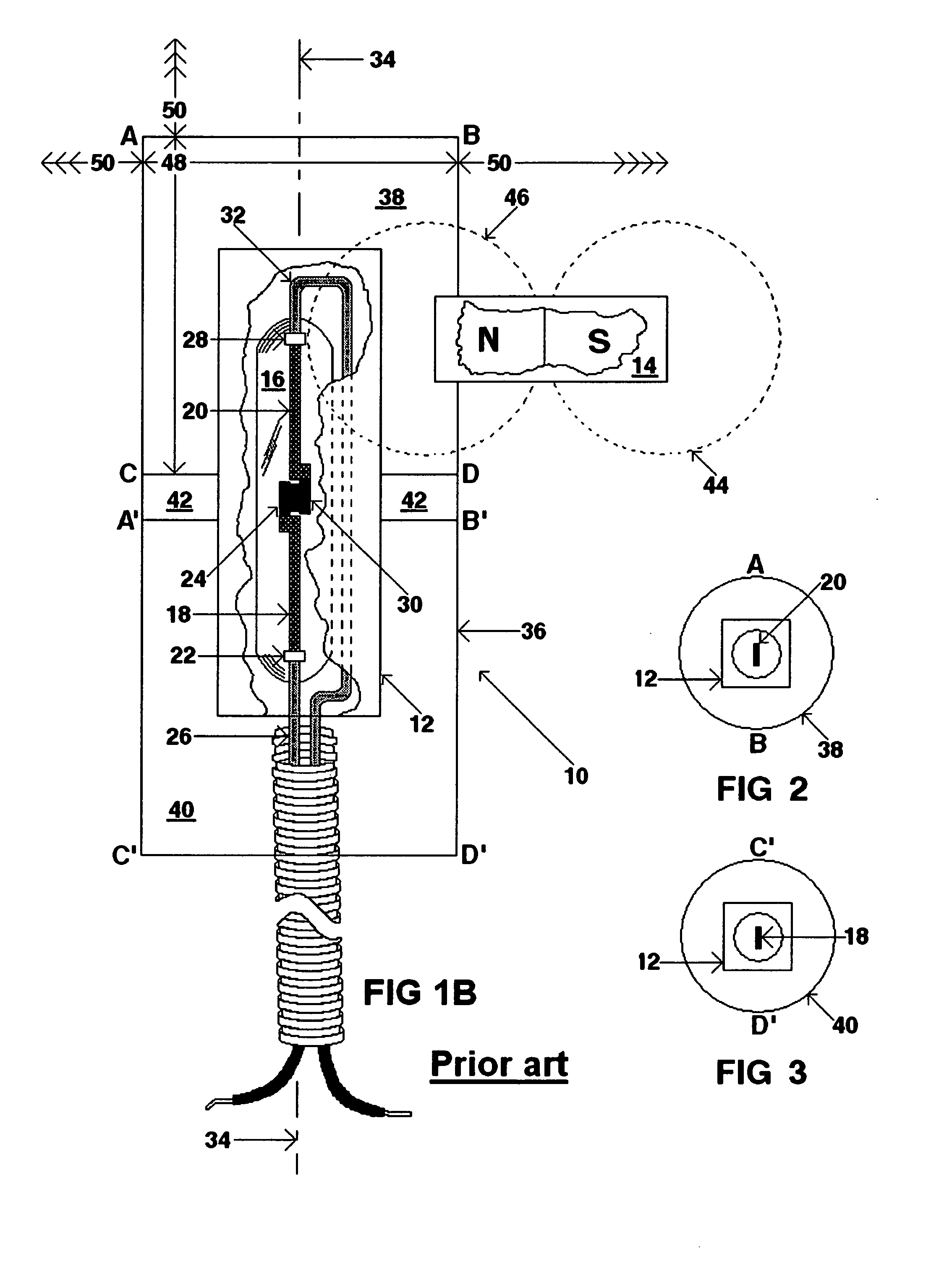In view of the relatively small tolerances presently used and accepted in the industry for gap and break distances, a problem exists in the use of prior art proximity devices in control devices and physical monitoring systems, such a security alarms.
In view of the relatively small gap and break distances between the reed switch and the biasing
magnet, slight movement of the biasing magnet relative to the reed switch could allow the reeds to be released, resulting in an unnecessary “
false alarm”.
An example of this problem is found in the use of proximity switches in an overhead door for a garage, as one example.
This can create a problem with proximity devices that require careful alignment for
operational stability.
Once the door shifts out of alignment, it is difficult, if not impossible to use the proximity device to set an alarm until the alignment is returned to at least the position when the proximity device was installed.
However, to the untrained eye of many customers, it is difficult to identify the problem.
To them the door is closed and secure, so something is wrong with the
security alarm that was installed.
As a result, the customer requires the
security alarm service to fix the problem at its own costs.
Even if the door is initially aligned when the alarm is set, problems with the
security alarm still might occur.
Do to the overhead door being out of square, or possibly because a forklift has accidentally adjusted the door during the day, adverse pressure may create binding pressure that may cause the door to move after the door has been closed and secured.
The sudden and unanticipated movement of the door causes the biasing magnet to move out of alignment relative to the reed switch, thereby creating a condition in which the alarm may trigger.
In the security alarm industry, this is called “swinging” and can result in a
false alarm.
Although the shift in a large overhead door is very gradual, the same problem of swinging can still occur.
For instance, it takes a long time for opening and closing pressure to shift the door segments of a commercial door.
But a drop in temperature can make the reeds contract.
For instance, in the example of the overhead door in which the security alarm is installed, the repeated movement or operation of the door can cause the door to move out of alignment relative to its initial position immediately after it was installed.
As such, a drop in temperature might cause both the magnet and reed switches metals to contract sufficiently to result in a
false alarm activation.
As a result, the change in temperature may make it difficult for the
magnetic field of the biasing magnet to bias one or both reeds sufficiently to operate the reed switch and in turn the security alarm.
As a result, the alarm will not be able to be set or will trigger a false alarm activation.
Another weather related problem is the wind.
Wind gusts might cause a garage door or window to move out of alignment after the alarm has been set.
Again, this slight movement can result in a false alarm.
If the alarm switch is on the edge but sets at the time of arming the biasing magnet could release the switch later resulting in a false alarm activation.
If the alarm sets with the opening in this position a false alarm activation could occur.
Accordingly, the precise alignment that is required to set and use a proximity device is a problem in the physical monitoring industry.
However, not all magnets or proximity switches are mounted perfectly to all surfaces.
This can lead to some hurried installations with some alarm contacts not being precisely aligned.
However, the
magnetic field will shift out of alignment and require possible resetting by repeated service calls, which is a cost that is often paid for by the
consumer.
Although perfect alignment is not an absolute requirement, if the biasing magnet is out of alignment by ½ to ¾ of an inch of its preferred position, problems with setting the alarm and weather will have an increased
impact on the ability to set the alarm.
The contractions might cause the alignment of the reed switch relative to the biasing magnet to move even further.
Therefore, even if the reed switch is aligned sufficient to set the alarm, that condition may change at night when the temperature drops.
As the temperature drops, a false alarm might occur because the reed switch has moved out of alignment with the biasing magnet.
Because of the sensitivity of reed switches to slight or momentary movements and changes in temperatures, the reliability of proximity devices have been drawn into question.
False alarms produced by slight movement of the reed switch relative to the biasing magnet leads to unnecessary multiple police responses and as well as fines incurred by the customer.
In addition to the fines, the number of times a false alarm is triggered causes police and other law
enforcement personnel to direct their attention away from other tasks as well as putting themselves and the public at risk during the response.
Furthermore, each time a false alarm occurs, a
technician might be required to realign the relative position between the reed switch and the biasing magnet.
This becomes costly and reduces the ability to discern whether an alarm is triggered because of an intruder or because of some other reason.
Prior art solutions to the problem with proximity devices have been unsuccessful in resolving lateral shifting problems associated with magnetic reed switches.
The problem with lateral slide play cannot be addressed by the
wide gap switches.
The problem resides in the
physics of the poles of the magnet.
The other pole starts to cross the center of the reed, when the pole is near the center of the parallel reed it cannot maintain control of the reed.
This, combined with the
fast speed of the alarm circuit, is where unnecessary false alarms are generated.
Holce teaches that by adjusting the distance of the biasing magnet, smaller magnets for a given separation makes the device less expensive to produce, more easily concealed from
sight, and more difficult to detect.
However, Holce does not teach how to better control the sensitivity of the proximity devices through the use of an improved magnetic
assembly that is relatively low in cost.
Also, Holce does not teach the use of an enhanced magnetic
assembly that provides the flexibility to design the amount of gap or location of the break distance that is desired, beyond present industry standards.
 Login to View More
Login to View More  Login to View More
Login to View More 


